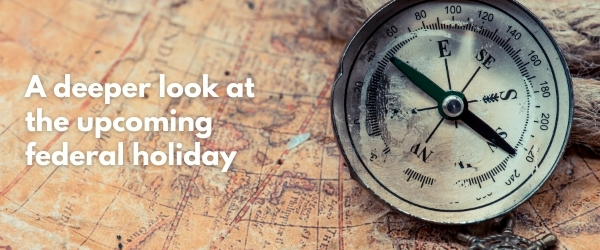


As part of our commitment to help build a more diverse, equitable and inclusive community for our employees and customers, Pentucket Banker Marian Willis shares the history of the upcoming federal holiday Columbus Day, and dives into the background of the movement to rename the holiday Indigenous Peoples' Day.
.jpg) Marian Willis
Marian WillisMortgage Loan Processor
Diversity, Equity & Inclusion Committee Member
History of Columbus Day
Christopher Columbus was an Italian-born explorer. He set out on a journey to find an alternative route to the Far East, but instead landed in the New World. He arrived in the Americas on October 12, 1492, and this led to the colonization of the Americas by Spain and other European countries. This later led to the “Columbian Exchange” which involved the transfer of people, animals, plants, culture, and technology between the Americas and Europe.
Columbus Day was created as a federal holiday on June 28, 1968, by President Lyndon B. Johnson. It was effective beginning October 11, 1971, and is celebrated annually on the 2nd Monday of October. Throughout the years Italian Americans have observed Columbus Day as a celebration of their heritage. The celebrations usually involve large festivities and parades.
Columbus Day has since fallen under great scrutiny. People in the United States of America and in other places of the world have questioned his so-called colonization of the western hemisphere and the ultimate price paid by the original inhabitants of the land, the indigenous people.
The Rise of Indigenous Peoples’ Day
Dr. Leo Killsback, a professor of Indigenous Governance at Montana State University, stated that “Columbus Day is not just a holiday, it represents the violent history of colonization in the Western Hemisphere.” Some activists claim that Columbus statues and Columbus Day celebrations give honor to a man who enslaved Native Americans and stole their land, claiming he had discovered it. The question that is often asked is, how can you discover a place that is already inhabited?
It has also been said that the “Columbian Exchange” opened the Americas to smallpox and other diseases, which had adverse effects on Native Americans. Columbus coming to the Americas paved the way for other European countries to come here. Indigenous people have seen their cultures eroded, their ancestral land dislocated, and a change in their ways of living.
In most recent years some states have chosen to rename or call Columbus Day Indigenous Peoples’ Day. Some of these states are Alabama, Alaska, Hawaii, Idaho, Maine, Michigan, Minnesota, New Mexico, North Carolina, Oklahoma, Oregon, South Dakota, Vermont, Wisconsin, and the District of Columbia.
Indigenous Peoples’ Day is seen as a time to celebrate and reflect on the life of Native Americans and their ancestors, culture, strength, and history. Let us use this upcoming Columbus Day/Indigenous Peoples’ Day to reflect on our history.

